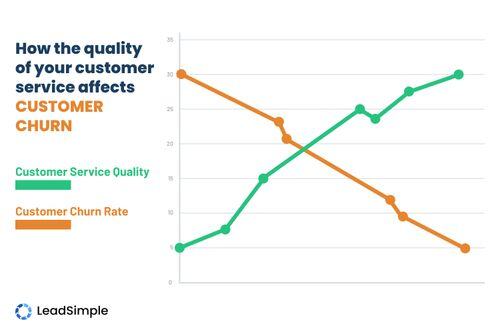Churn with Peter Lohmann
What do you do when you lose clients?
Do you cut your losses and move on? Chalk it up to problematic clients? Blameshift to your team?
What about when you lose 120 units all within the span of three to four weeks?
Our good friend Peter Lohmann experienced this at the beginning of 2023.
Peter’s reaction was to look candidly at his company and take the unique opportunity to identify and address needed changes that feedback from the clients had surfaced. What specifically contributed to losing some of their biggest clients and what could they do about it?
Peter wrote very openly in his newsletter about the loss and about what he was going to do about it. Now, eight months later, we sat down and chatted about what he did and how it has gone.
Peter identified six strategies he wanted to put into place throughout 2023 to help the company rebuild and become more resilient:
- Make adjustments to their P & L to stay healthy while they rebuild
- Lean heavily into technology partners that unsilo information and build resilient processes
- Restructure their property management department into three functional groups: tenant ops, client ops, and customer service
- Document and chase down the source of errors aggressively
- Get extremely focused on metrics that have an outsized effect on clients, such as Time to Turn and Days on Market
- Consider a free signature program for 10+ unit clients
(While we focused mainly on points two to five in our conversation, you can read Peter’s latest update on all six strategies in his newsletter here.)
Un-siloing Information
One of the big issues Peter identified was with customer service. Their clients let them know that they weren’t always feeling cared for, weren’t being communicated with as they expected, or weren’t feeling heard.
There is always a cause for poor perceptions of your customer service. As a business owner, you should have your thumb on the pulse of your customer service at all times. It might be that your team is swamped with too much work. It might be a people problem - an attitude or culture problem. It might be that your organizational structure is actually an obstacle to providing great customer service (more on that below). Or it’s a system issue - maybe your team just doesn’t have the info they need when they need it.
Peter identified two areas that could use improvement. Number one? Make it easier for the team to do their jobs. When information is siloed in a company, the team hits roadblocks at every turn and the customer gets the brunt of that. When a client has a question and your team can’t access the information needed to answer that question quickly and adequately, the client experience suffers and the trust your client has in your company drops.
Plus, having info siloed in departments, softwares, or with certain team members makes it harder for your team to actually do their work. Teammate on vacation? Can’t access something he would usually provide to you? Now you’re blocked.
Have too many softwares to log into? Not sure where to go for what? Be careful not to segment your information into dozens of tools. Simplicity, consolidation, and integration is key when looking at your tech stack.
Then, make sure that you are utilizing the tech you have to the fullest so your whole team has one place to check to know exactly where every property is at at any given moment.
“So in thinking through all that, I just turned my attention back to some of these things and doubled down on software partners that integrate with our main property management software, which happens to be Buildium. LeadSimple, you know, rolled out an amazing integration with Buildium that allowed us to really beef up our processes and make them way more robust and powerful.” ~ Peter Lohmann
Separating Ops from Customer Service
The second strategy Peter put into place was splitting out operational tasks and customer service. (Learn more about Peter’s philosophy on this here!)
There are a lot of minute operational tasks in property management. Everything from preparing leases for renewal, handling a PMA renewal, creating work orders and preparing eviction notifications, to meeting a potential tenant at the property, making sure technicians have access to the correct units and chasing down vendors, etc.
“Those types of activities require a certain type of personality: someone who's highly driven, like a Type A person or high D on the DiSC scale. They're just gonna go after it. They're gonna get it done. They're very task oriented.” ~ Peter Lohmann
On the flip side, you have inbound requests from your clients. Residents calling in with questions about a late fee, or an owner calling in with a question about a disbursement. That’s customer service. It requires both relational skills and time (that operations people rarely have) to make sure the customer feels heard and understood.
If you have one person responsible for both types of tasks, you are setting them up for failure. Inevitably, customer service pulls away from operational tasks, and operational tasks from customer service. Your employees can try to keep those in balance, but one or the other will always suffer and burnout is always a risk. Protect your employees’ focus and play to their strengths.
“I have this vision where you separate out those functions where you have your operations people focused on operational tasks, not getting interrupted with customer service tier one level questions. And then you have your customer service people who are not doing operational tasks and have the time to spend with your customers when they have a question.” ~ Peter Lohmann
Peter was also careful to choose metrics for each type of role that fit the role’s focus. For customer service, he measures NPS scores, time to close tickets, number of tickets closed, and speed picking up the phone. His operations team has a totally different set of metrics around operational data.
Turning Complex, Non-Routine Tasks into Routine, Simple Tasks
The next thing Peter focused on was error management.
Absolutely critical in property management.
“When a property owner logs into their portal or gets their statement and they see a mistake, it is nuclear. I mean, it's a big, big problem for them. And now they're suddenly doubting everything you've ever did, every quote you ever got, every disbursement they ever received, every tax document, they're going back, they're double checking. You've lost that benefit of the doubt.” ~ Peter Lohmann
With the US office worker error rate around 3% and your team handling hundreds of tasks, you will inevitably have errors and mistakes. How can you minimize those mistakes and deal with them when they occur?
Peter spent a lot of time thinking about which errors need to never happen and which are less critical, as well as how to reduce the frequency of errors.
He decided that the most important thing to do was to make his accounting processes bulletproof. He looked for a vendor to do their reconciliations and found APM Help, which has been a great addition to the company.
Then Peter focused on the process to handle mistakes when they do happen. He created a JotForm that asks the team to pick from a dropdown of options (owner refund, tenant security deposit inquiry, etc) and asks other questions about the accounting request. This forces all requests through the same funnel and increases efficiency when handing off the issue. It also provides excellent data on the frequency and types of errors that are occurring so he can fix them before they even happen.
Lowering “Time to Turn” and “Days on Market”
The next thing Peter focused on was reducing his vacancy length.
Overall vacancy length matters a lot in property management. It impacts your overall occupancy rate across your whole portfolio (the longer your average vacancy the lower your average occupancy).
It has a huge impact on your owners - both financially and psychologically. Owners are also most likely to churn during a vacancy period.
The first step to shortening these metrics is to measure them.
“The old saying about what gets measured gets managed is so accurate.” ~ Peter Lohmann
Peter started tracking three dates manually:
- When did we get possession of the unit?
- When did it get listed for rent?
- When did it get leased?
(Note: Peter recommends looking at the trailing 90 day median rather than the average for both these metrics. This will be more accurate than an average, which could be skewed by a single long turn.)
Peter and his team started measuring and reporting on those two metrics weekly, along with assigning ownership to certain members of the team. Giving ownership and agency to your team is crucial.
“You start getting all these creative ideas coming out of your team because they know that it's getting looked at.” ~ Peter Lohmann
A lot of small creative changes, added automations, and tightening up their timelines added up to improve their TTT from a high of 46 days to 21 days. They dropped their DOM from a high of 42 days to as low as 15 days!

Ultimately, Peter has seen the powerful impact of these changes throughout the year in the company as their churn since January is the lowest it’s been in four or five years.
“All you can do is make an informed decision about what you think is impacting your client's unhappiness and then take action on it. So we do NPS surveys for clients and tenants. We look at comments that come back from those, and those help us understand areas that we can work on and areas where we're making improvements.” ~ Peter Lohmann


